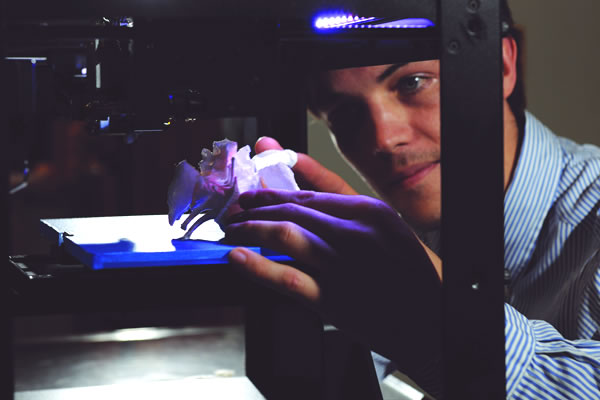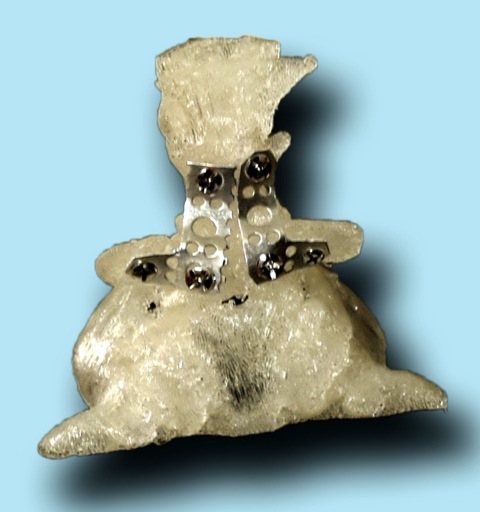· 3D Hardware
· 3D Software
· 3D Video
· 3D TV and Movies
· 3D Art
· 3D Picture of the Day
· 3D Modeling
· 3D Printing
· Reviews
· Gaming
· How To
· News
· Everything Else
· Off Topic
· Around the Web
· Virtual Reality
Posted by: Jesse on: 01/23/2014 07:17 PM
One of the most exciting aspects of 3D printing technology is the versatility. Not only can we manufacture guns, meat, and aeronautical parts, the Auburn University College of Veterinary Medicine has created a vertebra for man's best friend.
The doctors at the University used a MakerBot Replicator 2 to successfully create a doggy bone (ha) for an injured Yorkshire terrier. Sophi, the seven year old Yorkie had a problem with her back that made walking difficult. Traditionally doctors would only be able to assess the problem using a model and select the parts and hardware that they thought would fit correctly with the dog's anatomy. This process is very delicate and takes time, something that Dr.'s Don Sorjonen and Adrien-Maxence Hespel didn't want to risk with this 3 pound pup.

Thanks to 3D printing technology, they were able to replicate and exact model of the dog's injured vertebra. Without that, the doctors did not think the operation would have been successful.

With all the gadgets and gizmos that 3D printing generated it is sometimes hard to take the industry seriously. But, as with Sophi's case, 3D printing can be used in invaluable ways. Let us not forget how UK surgeons made facial bones for a cyclist badly injured face, it how Japanese doctors used a 3D printed model in order to better fit an adult Keizer into a child recipient for a transplant.
This technology had the medical field very excited as people being pushing the limits and exploring the boundaries of 3D printing. Just ask Sophi.
The doctors at the University used a MakerBot Replicator 2 to successfully create a doggy bone (ha) for an injured Yorkshire terrier. Sophi, the seven year old Yorkie had a problem with her back that made walking difficult. Traditionally doctors would only be able to assess the problem using a model and select the parts and hardware that they thought would fit correctly with the dog's anatomy. This process is very delicate and takes time, something that Dr.'s Don Sorjonen and Adrien-Maxence Hespel didn't want to risk with this 3 pound pup.

Thanks to 3D printing technology, they were able to replicate and exact model of the dog's injured vertebra. Without that, the doctors did not think the operation would have been successful.

With all the gadgets and gizmos that 3D printing generated it is sometimes hard to take the industry seriously. But, as with Sophi's case, 3D printing can be used in invaluable ways. Let us not forget how UK surgeons made facial bones for a cyclist badly injured face, it how Japanese doctors used a 3D printed model in order to better fit an adult Keizer into a child recipient for a transplant.
This technology had the medical field very excited as people being pushing the limits and exploring the boundaries of 3D printing. Just ask Sophi.

